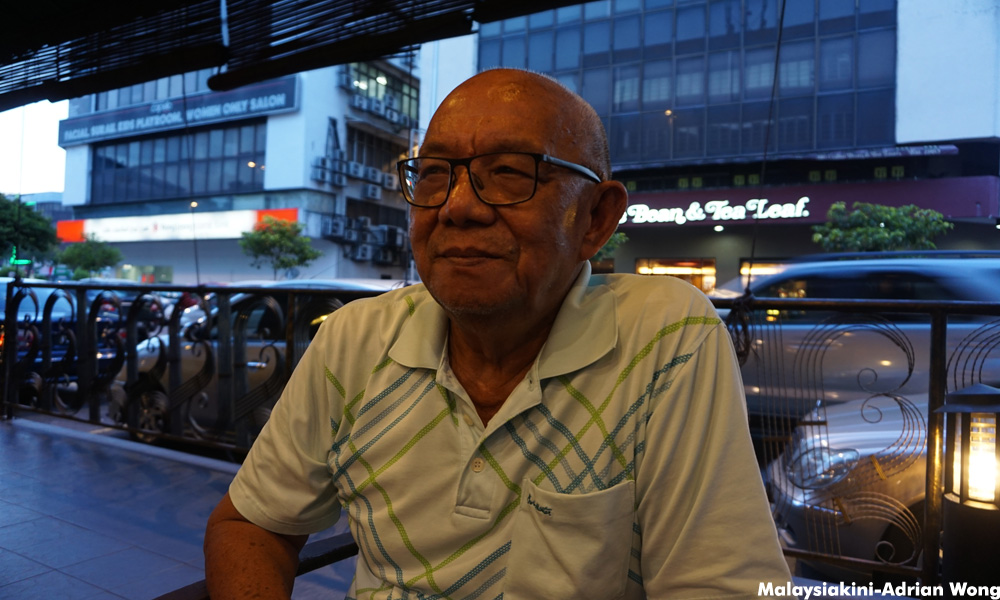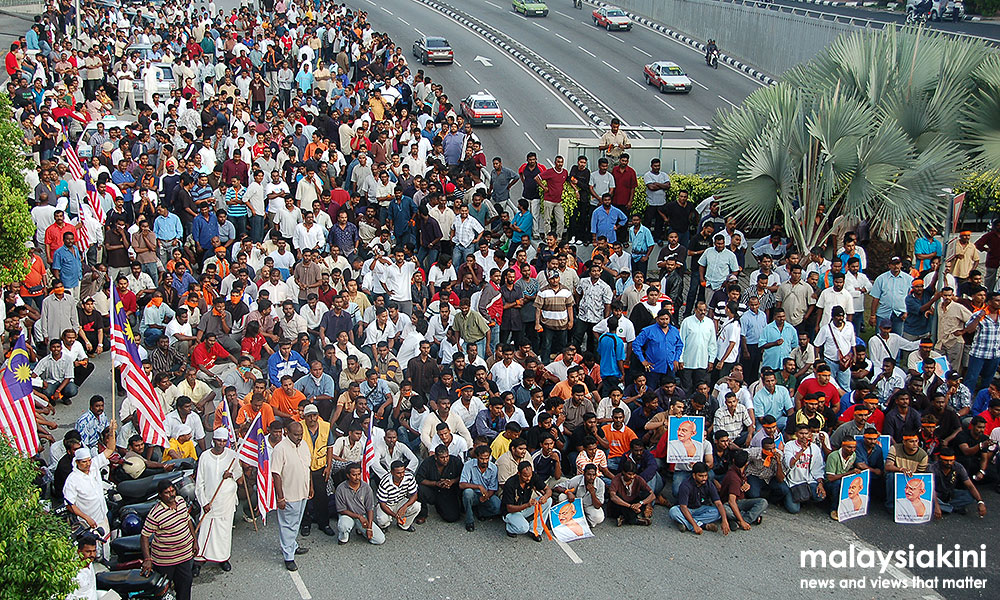SPECIAL REPORT | “Generations to come will scarce believe that such a one as this in flesh and blood walked upon this earth.”
This was what Albert Einstein said about Mahatma Gandhi, the leader who employed non-violent civil disobedience against British rule in India.
The above quote is apt. Because in the same breath, generations of Malaysians will scarce believe that in 2007 three major socio-political movements in the span of three months would shape the next decade.
Several individuals were there among the tens of thousands. They saw the crowd, confronted the water cannons and tear gas.
What did they learn? What can they teach us? In this final part, five more activists reveal their thoughts on the major events 10 years ago.
A timeline of the events can be viewed here.
1. Baharuddin Ismail (72, Hindraf and Bersih)
2007: Retired
2017: Retired
Septuagenarian Pak Din, as he is commonly known in civil society circuits, calls himself a "career rebel".
He never misses a rally. He lives by the motto “Jiwa saya jiwa Merdeka, pemikiran saya tidak boleh dijajah” (My spirit is the Merdeka spirit, my thoughts cannot be colonised).

What inspired you to participate in the movements?
I am a career rebel. During the golden age of the workers’ unions in the 1960s, strikes would break out whenever workers lose their jobs for being part of a union. They were broke, so I would send them biscuits to eat. At the end of the 1970s, I finally took part in the movement.
I found out about Bersih rally through the media. I was previously the Suaram secretary. I joined the organisation after Anwar Ibrahim was jailed. I left my post in 2004 or 2005.
In April 2001, together with Tian Chua, Hishamuddin Rais and others, I was jailed under the Internal Security Act. We were activists, but the government claimed we were trying to overthrow the government by force.
I was not sent to the Kamunting detention camp, but was arrested for 41 days. Basically, the government wanted to "fish" information from us but we were immune to their threats.
I have never joined any political parties, as I refuse to be told what to do. I am committed to the Merdeka spirit.
I don’t like being a part of big groups, and I don’t like just waiting around for big rallies to happen. In other words, I can’t join any groups. I will criticise whoever is in the wrong.
What do you remember about the rallies?
Bersih
At the time, I did not know who Maria Chin Abdullah and all these people were, but I went along with PKR’s Tian Chua. We left Sogo and saw many police officers (uniformed and plainclothes) around the area. We knew they were plainclothes police because we often took part in demonstrations.
I don’t remember the details, but it rained that day and I still remember wearing a yellow raincoat over my yellow T-shirt. We already guessed that the authorities would try to suppress and stop the rally, and that’s why after demonstrating at Sogo, we jumped on a friend’s motorcycle and headed towards the palace.

When we reached the palace, the rain subsided and there were thousands of people arriving all at once. The crowd was huge. I could not even see who was leading the rally but from afar, I saw Anwar Ibrahim and some other people handing over a memorandum.
I was so proud because members from different opposition parties had arrived together. They were united. Sadly, that is not the case today.
We left the Bersih rally at around 6pm. I was so shocked by the number of people who had shown up. It’s not easy to gather so many people. The last time I saw a crowd this size was in September 1998, when Anwar held a ceramah outside Masjid Negara after he was fired from his deputy prime minister post.
Subsequent Bersih rallies were also attended by crowds of a similar size. At that time, many people were deeply afraid of taking part in rallies. Once we overcame that fear, many people started attending them.
Hindraf
I am of Malay descent. Amidst the thousands of Indians in the protest, I was that rare Malay person. Hindraf leader P Uthayakumar is a friend of mine, and during Reformasi, when civil society groups were being dragged to court, he was their lawyer. He had never invited me to be part of the rallies, and I knew Hindraf had its own objectives, but I felt obliged to take part. It was my duty as a citizen.
As I drove past the Tabung Haji building towards Ampang at 6am, I saw many protestors and they were all behaving very orderly. At around 6.45am, the police began to fire tear gas (at the protesters) and there were even helicopters in the sky. The atmosphere was very tense but the crowd continued moving towards the Petronas Twin Towers.
When I arrived at the Petronas Twin Towers, I parked my car and joined the crowd. Things were only tense before 9am; after that it was fine. There were people giving speeches. The crowd was so large that the police found it hard to control what was going on.
I did not shout “Makkal Sakti” (the people’s power) like the others, but I did clap occasionally. But it was a cat-and-mouse game: I saw some people getting arrested.
The police did not anticipate such a large crowd. The protesters were streaming in from all directions - from Pudu, Brickfields, Ampang and all these other places. It was very orderly, even with the large crowds.
I was experienced and knew how to avoid being hit by the tear gas and water cannons. But during Bersih 2, I was hit by tear gas in Pudu. I can still remember like it was yesterday.
The first time I was ever hit by tear gas was on Sept 21, 1998. I was at Sogo that morning, and the police manhandled me. On that same night, I was hit by the police at Kampung Baru and had to get stitches on my head. Over 800 people were detained and more than 100 were eventually charged, including me.
I had been part of the Police Watch group organised by Uthayakumar and the others (from Hindraf), where we monitored those "death in custody" cases. So I knew some of the Hindraf members.
I may have been the only Malay among the protesters there, but the police were not shocked by my presence. They knew I was not from the government.

I left the Petronas Twin Towers at around 10am, and went for a cup of tea at a place opposite the Australian High Commission building. When I left at around 12 noon, the crowd had started to disperse...

